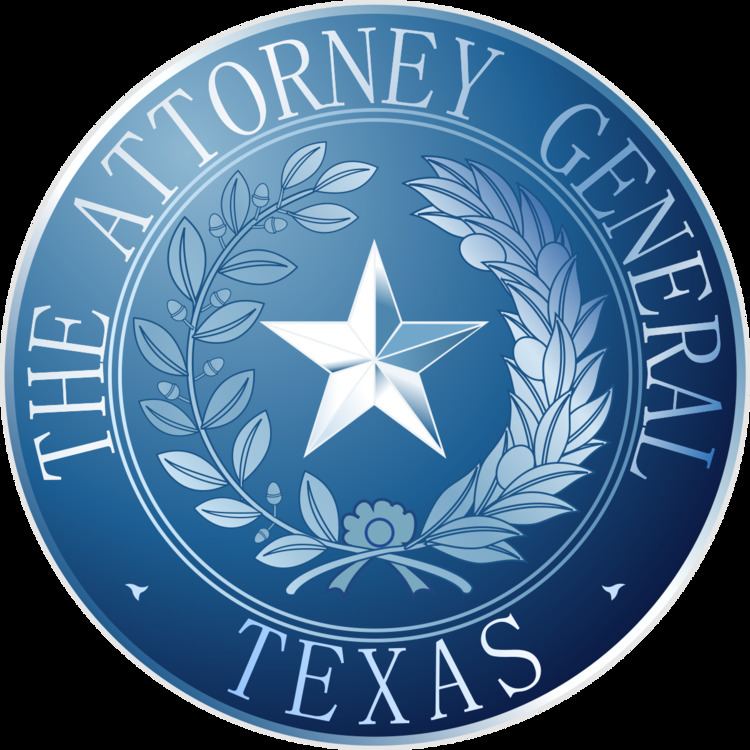Style The Honorable | Inaugural holder Volney E. Howard1846 Website www.oag.state.tx.us | |
 | ||
Term length Four years, no term limits | ||
The Texas Attorney General is the chief legal and law enforcement officer of the State of Texas.
Contents
The department has offices at the William P. Clements State Office Building in Downtown Austin.
History
The Office of the Attorney General was first established by executive ordinance of the Republic of Texas government in 1836. The attorneys general of the Republic of Texas and the first four attorneys general under the 1845 state constitution were appointed by the governor. The office was made elective in 1850 by constitutional amendment.
The Attorney General is elected to a four-year term. In 2013, former Attorney General Greg Abbott announced he would not seek reelection and would run for Governor. In November 2014, he was elected as the Governor of Texas. Ken Paxton defeated former House Representative Dan Branch in the Republican primary by a 26% margin and was elected easily in the general election as the 50th Attorney General of Texas, (there is a historical dispute whether he is the 50th or 51st Attorney General). Ken Paxton was sworn in on January 5, 2015 in the Senate Chamber in the Texas Capitol. Governor Rick Perry, Lieutenant Governor David Dewhurst, United States Senator Ted Cruz, Lieutenant Governor-Elect Dan Patrick and Supreme Court Justice Don Willett all participated in the swearing-in ceremony.
Duties and responsibilities
The Attorney General is charged by the state constitution to defend the laws and constitution of Texas, represent the state in litigation, and approve public bond issues. There are nearly 2,000 references to the Office of the Attorney General in state laws.
To fulfill these responsibilities, the Office of the Attorney General serves as legal counsel to all boards and agencies of state government, issues legal opinions when requested by the governor, heads of state agencies and other officials and commissions, and defends challenges to state laws and suits against both state agencies and individual employees of the state. These duties include representing the Director of the Texas Department of Criminal Justice in appeals from criminal convictions in federal courts. The Office of the Attorney General, Law Enforcement Division employs a staff of sworn commissioned Texas peace officers (state police) that investigate public corruption, violent crime, human trafficking, money laundering, medicaid provider fraud, mortgage fraud, election violations, cybercrime, fugitives (apprehension), investigate other special classes of offenses, and conduct criminal investigations at the request of local prosecutors. In addition, the Law Enforcement Division is the state of Texas liaison to Interpol (International Criminal Police Organization) and the U.S. Department of the Treasury, Financial Crimes Enforcement Network (FinCEN). The office is also charged with proceedings to secure child support through its Child Support Division.
State of Texas
The Attorney General table is in color code: Blue, pink, and white backgrounds are used below as indicators for the different political parties listed. The names of the attorneys general are blue for links to existing Wikipedia content and red for links that are not a created page link. Blue Democratic. Pink Republican. White Independent.
Political prominence
Many leading political figures in Texas history have served as Attorney General, several of them using the office as a jumping off place to other offices in the state and national government. Attorneys general James S. Hogg, Charles A. Culberson, Dan Moody, James Allred, Price Daniel, Mark White and Greg Abbott were elected governor. Culberson, Daniel, and John Cornyn were later elected to the United States Senate.
